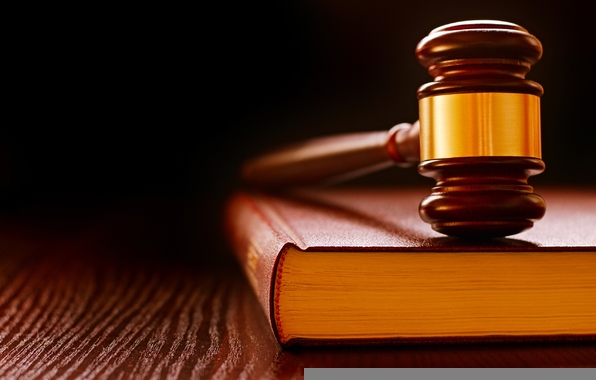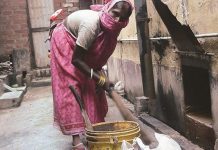This article is written by Jannat, a student of BA LLB (Hons.), Chandigarh University, Mohali. The article sheds light on the loopholes in India’s judicial system, and its evolution towards the court system.
Table of Contents
Introduction
“Justice delayed is justice denied” is a legal maxim meaning that if a legal remedy is available for a party that has suffered some injury, but is not forthcoming promptly, it is effectively the same as having no remedy at all. This principle is the basis for the right to a speedy trial and similar rights which are meant to expedite the legal system because it is unfair for the victim to have to sustain the injury with little hope for resolution. The phrase has become a slogan for legal reformers who view courts or governments as acting too slowly in resolving legal issues either because the existing system is too complex or overburdened, or because the issue or party in question lacks political favour.
India has an independent judicial system. Indian judicial system has a federal structure.
- Supreme Court.
- High Court.
- District Court.
- Supreme Court: The Supreme Court of India is also known as the apex court of the land. It comprises 33+1 judges (33 judges + Chief justice of India). The Chief justice of India doesn’t have any veto powers. He is also called “master of roaster”. The Supreme Court is the top authority of law and the last appellate court in India.
- High Court: The Supreme Court is followed by the High Court as the top judicial authority of the state, controlled and headed by the chief justice of states. There are 24 high courts in India (as of 4 April, 2020).
- District Court: Last in the hierarchy is District Court also known as Subordinate Courts. These courts are controlled and managed by district and session judges under the full supervision and direction of respective high courts. The subordinate courts are further divided into 2 courts- (i) Sessions Court (ii) Civil Courts.
The Supreme Court and High Courts are provided with appellate jurisdiction. Appeals from the District Court go to the high court and from the High Court to the Supreme Court.
Hidden factors that slow our courts and delay justice
Corruption in Indian Judiciary
Is the Indian judicial system unethical? The corrupt judicial system may be one of the reasons for the delay of justice. The corrupt judges may deliberately don’t announce their judgment or grant unfair adjournments to the party they favour. There may be personal bias or belief to sustain the judgment.
Indian judicial system is compared to cobweb where the small insects get caught and the big insect smashes it.
The cash at doorstep case:
Retired high court judge Nirmal Yadav was found guilty to have received Rs. 15 lakh from Delhi businessman Ravinder Singh in 2008. This money was first mistakenly delivered at the Chandigarh residence of Justice Nirmal Yadav (then a judge of Punjab and Haryana high court) on August 13, 2008. The money was alleged to have been delivered to Nirmal Yadav at her official residence the next morning. The money was taken to Justice Nirmaljit Kaur’s residence by Parkash Ram, a clerk of advocate Sanjiv Bansal, then additional advocate general Haryana on directions of Ravinder Singh. When the amount reached Justice Nirmaljit Kaur’s house she called Chandigarh police which seized the amount and took Parkash Ram to the police station for questioning.
Lack of Manpower
In 2016 the then Chief Justice of India, Justice T.S. Thakur during an event started sobbing and lashed at the government “Therefore not only in the name of the litigant… the poor litigant (he pauses as his voice trembles with emotion) languishing in jail but also in the name of the country and progress, I beseech you to realise that it is not enough to criticise the judiciary…You can’t shift the entire burden on the judiciary, Nothing has moved since 1987″
He referred to how the Law Commission in 1987 had recommended 40,000 judges in the country to tide over the problem of pendency of that time. Its report had said that there were only 10 judges to a million population when there should be at least 50 judges per 10 lakh population.
At the heart of the CJI’s address were four strands of arguments: that judges are overwhelmed by the load of litigation; judicial vacancies are not being filled up; the appointments procedure is getting stuck at the level of the government for obscure reasons; and that without the wheels of justice turning smoothly, the common man will suffer the most.
As of 1 January, 2016, according to Court News, a publication of the Supreme Court of India, there were 16119 judges in subordinate judiciary, 598 in High Court, and 26 in Supreme Court in 2016 there were 32 million pending cases.
“It’s deliberate negligence from governments that has pushed the judiciary into such a state of scarcity,” says eminent jurist Ram Jethmalani. “The judiciary accounts for just 0.5 percent of the budgetary allocation.”
|
Country |
Judges/Million |
|
Slovenia |
390 |
|
Germany |
250 |
|
Belgium |
230 |
|
Sweden |
130 |
|
USA |
107 |
|
Canada |
75 |
|
England |
51 |
|
Australia |
41 |
|
India (2018) |
19 |
Judges per million in different countries.
Complexed Judicial System
“On 13 June 1997 at 4:55 p.m. a swirling mass of thick smog entered the balcony section of the well-known cinema hall located in south Delhi. With most exits unavailable and no usher to help, the people seated on the balcony found themselves trapped.
By 7:00 p.m. fifty-seven people had died and one hundred seven injured in the ensuing stampede. Two or more died later in hospital.
Neelam and Shekhar Krishnamoorthy lost their children Unnati and Ujjwal aged seventeen and thirteen respectively that day. They decided to fight for justice- to bring those who are responsible for tragedy to book. Their battle which started nineteen years ago continues till date.”- quotes the book “Trial by Fire”.
From the above-mentioned Uphaar cinema tragedy, it is evident how appeals, trials, and retrials consumed a long time. India has a complex judicial system. Cases go from inferior to the superior courts, new arguments, new evidence arises, dates are given after an interval of a long time sometimes a year. Retrials happen, and in this way, years pass, and sometimes decades pass. Meanwhile, the lives of victims became miserable during their long and never-ending fight for justice and about the shortcomings of our judicial system.
The only motive of our lives is to get justice for our children to see the culprits punished– says Mr & Mrs. Krishnamoorthy.
J. Jayalalitha v. Union of India
The complaint against Jayalalitha that she had amassed assets beyond her known sources of income was filed in June, 1996. The first charge-sheet was filed a year later, in June 1997.
The final verdict was delivered by the Supreme Court in February, 2017 that is, twenty years after the charge sheet was filed. Jayalalitha was held guilty but by that time, as we all know, Jayalalitha had already died.
The Doshipura Graveyard Case
This is the longest trial in the history of India. It started in the year 1878 and continues till now, more than over a century compared to others. started in 1870s and though a verdict was delivered in 1981, it was never implemented. Till as recently as 2014, the two sides, Shias and Sunnis of Doshipura, were seeking further clarifications and filing fresh applications on their grievances. At the heart of the issue are nine plots in Doshipura which Shias claim as theirs, given to them by the Maharaja of Varanasi for holding religious discourses and recitations during Muharram while Sunnis claim that part of the area was their graveyard.
The disputed plots include a mosque, a baradiri and an imambara, all of which are used by both sects. There is permanent police presence in the area, which gets intensified during Muharram. Courts have ruled in favour of the Shia community with plenty of back and forth and even the state administration has been caught in the crossfire. In 1981, the Supreme Court too upheld the rights of Shias. The two graves, it was later ordered, were to be shifted with boundary walls constructed around the contested plots. In 1986, the state administration cited fear of sectarian conflict and the court put its order in abeyance for the next decade, calling for a peaceful resolution.
In 1996, the abeyance was extended by another 10 years. In 2013, the court asked Advocate General Irshad Ahmad why the dispute has been allowed to linger while in 2014, a bench comprising Justices RM Lodha, Kurian Joseph and to screen Fali Nariman declared themselves ‘satisfied’ that the two graves had been enclosed by a permanent masonry wall and as such ‘no further order needs to be passed’. The bench did however grant the applicants liberty to make a fresh application ‘narrating facts and the subsisting grievances of the applicants’.
The longest trail in the US was the McMartin preschool abuse trial which continued for seven years and its cost of the investigation was $15 million and the lengthiest trial in the United Kingdom was the Jubilee line corruption trial which continued for 21 months and the cost of the trial was £60 million.
Lack of transparency
There is a lack of transparency and accountability in the functioning of the Indian judiciary. Mysteriousness in the judicial process is a matter of public concern.
- Appointment of judges
Judges in India are appointed by a collegium as held in Three Judges Cases.
- Allocation of benches
Benches in the Supreme Court are allocated by the Chief Justice of India also known as Master of Roaster.
On 12 January, 2018 four senior-most judges of the Supreme Court held a Press conference and raised the issue of assigning cases in the apex court and flagging some other problems including issues afflicting the country’s Highest Court.
How to Improve Court Efficiency
- By setting ADRs (Additional Dispute Resolutions) so the workload of courts can be decreased.
- By simplifying the procedure, for a speedy trial.
- By making the judicial process transparent.
- Increasing the function of Information Technology in the Judicial System.
- Improving the quality of Law Graduates.
- Advice for lawyers- Be Brief, Be Bright and Be off.
- Increasing the number of judges from lower to the top level.
- Live screening of the courts.
- Reducing the corruption in Judiciary primarily at the top level.
- Ending post-retirement jobs for the Judges.
- The appointment of upright and competent people, particularly in the higher judiciary is a sine qua non for a judiciary enjoying the confidence of the people.
E-Court project
The eCourts Project was conceptualized based on the “National Policy and Action Plan for Implementation of Information and Communication Technology (ICT) in the Indian Judiciary – 2005” submitted by the committee, Supreme Court of India with a vision to transform the Indian Judiciary by ICT enablement of Courts.
The committee is a body constituted by the Government of India in pursuance of a proposal received from Hon’ble the Chief Justice of India to constitute a committee to assist him in formulating a National policy on computerization of the Emsian Judiciary and advise on technological communication and management related changes.
The eCourts Mission Mode Project, is a Pan-India Project, monitored and funded by the Department of Justice, Ministry of Law and Justice, Government of India for the District Courts across the country.
Challenges when transitioning to e-courts
- Inadequacy of trained staff.
- Lack of technical staff.
- Absence of knowledge about the operation of the system among lawyers and litigants.
- Lack of technological development and access to the internet.
- Cybersecurity threats.
- Insufficient fundings.
- Poor Infrastructure and Electricity.
Computerization of Courts
e-courts are fully computerized and are also paperless courts. They are extremely user-friendly. There is a need to appoint staff for paperless courts and judges are advised to focus on online data entry.
Benefits of e-courts
- To provide efficient & time-bound citizen-centric services delivery as detailed in eCourt Project Litigant’s Charter.
- To develop, install & implement decision support systems in courts.
- To automate the processes to provide transparency in the accessibility of information to its stakeholders.
- To enhance judicial productivity, both qualitatively & quantitatively, to make the justice delivery system affordable, accessible, cost-effective, predictable, reliable and transparent.
- Mobility is not required, a person can attend a hearing from anywhere. ( as witnessed in the time of Lockdown, when online hearings were held)
Conclusion
30 million cases are pending in the law courts. By an estimate, it will take 360 years to clear the arrears.
There is an immediate need for action. The efficiency of Indian courts can be increased by putting up the necessary norms.
Judge Jerome Frank of the US court of appeal said “I am unable to conceive that in a democracy it can never be unwise to acquaint the public with the truth about the workings of any branch of government. It is wholly undemocratic to treat the public as children who are unable to accept the inescapable shortcomings of man-made institutions. The best way to bring about the elimination of those shortcomings for our judicial system which is capable of rising elimination is to have all our citizens informed as to how that system now actually functions. it is a mistake, therefore, to try to establish and maintain through ignorance, public esteem for our courts.”
“For satisfactory functioning of the judiciary, see things are necessary that judges should be honest, the judgment should be given on certain settled legal principles, and there should not be a delay and in deciding cases.
It will take unanimous and cumulative efforts by all to achieve the required progress in judicial reforms. We need radical reforms and a strong-willed to truly make a difference.”
-J. Markandey Katju
References
Book by Shekhar Krishnamoorthy
- https://m.timesofindia.com/city/chandigarh/cash-at-doorstep-r-k-jains-statement-recorded/amp_articleshow/57381129.cms
- https://www.thehindu.com/news/national/CJI-Thakur%E2%80%99s-emotional-appeal-to-Modi-to-protect-judiciary/article14257126.ece
LawSikho has created a telegram group for exchanging legal knowledge, referrals and various opportunities. You can click on this link and join:
 Serato DJ Crack 2025Serato DJ PRO Crack
Serato DJ Crack 2025Serato DJ PRO Crack











 Allow notifications
Allow notifications



